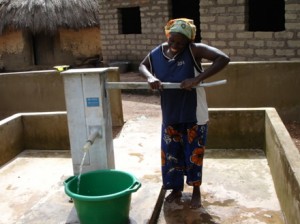Bolgatanga soon to have shortage of portable water – Ghana Water
 The delivery of treated water in Bolgatanga is expected to reduce, as the Vea Dam faces challenges.
The delivery of treated water in Bolgatanga is expected to reduce, as the Vea Dam faces challenges.
The gullies and tributaries feeding the dam have broken down, and effects of evaporation had taken its toll on the water resource, coupled with growing population and environmental problems.
Mr Robert Aggrey, Deputy Manager of the Upper East Regional Water Company Limited (GWCL), who disclosed this in an interview with the Ghana News Agency, said the company was operating on a shortfall of 400 million meter cube treated water delivery in Bolgatanga.
He said the region required a daily ration of 1.2 million meter cube of water, and that GWCL currently produced 800, 000 meter cube of water from the Vea Dam for daily delivery, which was not enough.
He said the GCWL was mobilizing resources to rehabilitate the gullies and access roads to the plant next year, so as to improve the situation of the dam, while anticipating a total rehabilitation.
He noted that the continuous use of the Vea Dam area by holiday makers for recreational activities, and waste emerging from nearby communities, were contributory factors to pollution of the water, and called on institutions and households that have waste water directed to the Dam, to redirect them.
For communities around Zuarungu that were not fed by the Vea Dam, the Deputy Manager said, Kumbusco , Yarigabiisi and its environs, were supplied with water pumped from GWCL boreholes located at Zuarungu .
He indicated that Bawku and Navrongo were also supplied on a borehole system, and hoped that expansion of water delivery was possible with the creation of more dams in the region, and the installation of treatment plants.
He lamented that the production system in Bawku was hampered by the destruction of water systems during violent conflicts that affected coverage and delivery of services in the area.
He said whilst his outfit would continue to ration water delivery in the Bolgatanga Municipality, sensitization was on-going, to educate the public to store water to cushion themselves during days when water would not flow in pipes.
It would be recalled that in 2012, contractors assigned to rehabilitate the Dam to embank, were met with resistance from the Vea community members, who insisted that for spiritual reasons the rocks that had to be blasted for the project was not to be touched.
Source: GNA
